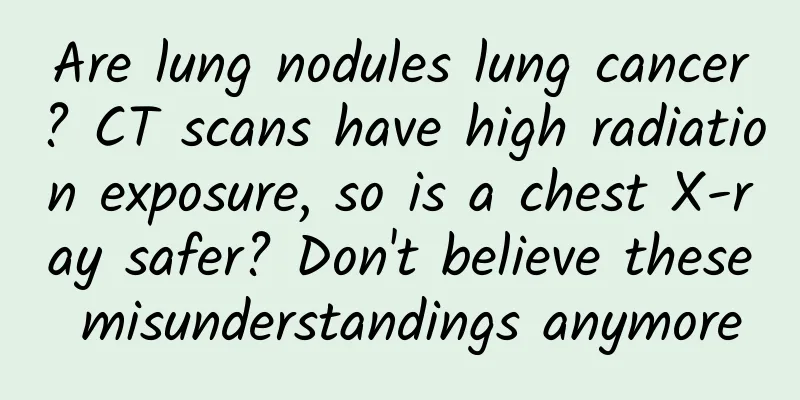What symptoms indicate breast cancer? Different types require different treatments!

|
Author: Luo Bin, Chief Physician of Beijing Tsinghua Chang Gung Hospital affiliated to Tsinghua University Reviewer: Xu Qing, Chief Physician, Beijing Boai Hospital, China Rehabilitation Research Center Chairman of the Thyroid and Breast Tumor Committee of the Tumor Rehabilitation Branch of the Chinese Anti-Cancer Association Breast cancer is the malignant tumor with the highest incidence rate among women worldwide. In my country, approximately 420,000 women are diagnosed with breast cancer every year. Some breast cancers are discovered when the patient feels a lump in the breast, while others are discovered through screening or physical examinations, such as ultrasound, mammography, or doctor's examination. A lump smaller than 1 cm is not easy to feel, so breast cancer discovered by feeling a lump is generally larger, such as 2 cm or larger; tumors discovered through screening are generally smaller and earlier, so our country recommends that women over 45 years old should undergo breast cancer screening once a year. A study in 2008 found that 82% of 4,000 new breast cancer patients with Beijing household registration were finally diagnosed by feeling the lump. In 2021, another study in Beijing found that 72% of breast cancer patients were diagnosed by feeling the lump themselves. Therefore, even if you do annual cancer screening, do not neglect self-examination, which is still the main way to detect breast cancer in our country. 1. What symptoms may indicate breast cancer? First of all, age is very important. The peak age for breast cancer in my country is 45-55 years old. If women in their 50s or 60s feel a lump in the breast, especially if the lump is hard and painless, they should be alert and go to the hospital for treatment as soon as possible. In addition to being able to feel a breast lump, if there is a local depression in the breast skin, also called the "dimple sign", it indicates that the lump has invaded the ligament connecting the breast skin and the pectoral muscle. The ligament shortens and pulls the skin on the surface of the tumor down, forming a depression. If the breast skin is edematous, like orange peel, it is called the "orange peel sign", which means that the lump is relatively large and has blocked the surrounding lymphatic vessels, causing edema. Some people may experience nipple discharge or bleeding, or obvious asymmetry of the breasts, as well as nipples that are more sunken than before and enlarged axillary lymph nodes. All of the above manifestations are clues to discover breast cancer. Pay attention and seek medical attention in time. Figure 1 Original copyright image, no permission to reprint 2. How is breast cancer diagnosed? If there is a lump in the breast, an experienced doctor can make a preliminary judgment on whether it is benign or malignant with a manual examination, with an accuracy of over 80%, but further examination is still needed. Ultrasound examination is the most commonly used method in my country. Breast X-ray examination (commonly known as mammography) can also be done. The gold standard for diagnosis is puncture for pathological examination. After the pathological diagnosis of breast cancer is made, the pathology department will also perform immunohistochemistry staining to classify breast cancer based on four major indicators, which is generally divided into four types. Estrogen receptor and progesterone receptor are positive, Ki67 is low, less than or equal to 14%, HER2 is negative, and it is caval A type breast cancer. There is also a type of breast cancer that is also estrogen receptor positive, progesterone receptor positive or negative, with a relatively high Ki67 level of more than 15%, called cavitary B breast cancer. Endocrine therapy is effective for cavitary B breast cancer. Cancer cells express a protein called human epidermal growth factor receptor, abbreviated as HER-2. If HER-2 is positive, regardless of the status of estrogen or progesterone, it is called HER-2 positive breast cancer. It is highly malignant, but the anti-HER2 treatment is more effective. Estrogen receptors, progesterone receptors, and HER-2 are all negative. This type is called triple-negative breast cancer, which accounts for about 20% of all breast cancers and is more malignant. In addition, based on the size of the tumor, whether there is lymph node metastasis, and whether there is metastasis to distant organs, it is divided into stage I, stage II, stage III, and stage IV. Stage I is the earliest, and stage IV indicates that there has been metastasis to distant organs other than the breast. The treatment of breast cancer is based on different pathological types and disease stages, and different treatment methods are adopted. 3. How to determine the treatment plan for breast cancer? Surgical resection is a very important treatment for breast cancer, but it is not always used as the initial treatment. In addition to surgery, breast cancer also has many other treatments, including chemotherapy, radiotherapy, endocrine therapy, targeted therapy, traditional Chinese medicine, immunotherapy, etc. It is necessary to make a reasonable combination and sort according to the characteristics of the disease. For example, triple-negative breast cancer is suitable for chemotherapy; hormone receptor-positive breast cancer patients are suitable for endocrine therapy; HER-2-positive is suitable for targeted therapy, that is, anti-HER-2 therapy. Breast cancer emphasizes multidisciplinary and comprehensive treatment. Surgeons, radiologists, pathologists, oncologists, radiologists, rehabilitation physicians, and sometimes orthopedics and obstetricians and gynecologists are also involved. Everyone discusses and analyzes together to develop the best treatment plan for the patient. Multidisciplinary team treatment allows patients to have the most scientific, comprehensive and warmest treatment process. It cares for patients at all levels, takes care of patients, and allows them to have a smoother treatment process and recover better during rehabilitation. This has become the mainstream trend in breast cancer treatment. |
Recommend
Precautions for ovulation induction
With the development of science and technology, m...
What causes uterine hydrops?
Hydrometra, also known as uterine effusion, is no...
What to do if your eyes itch during pregnancy
Many women find their eyes itchy during pregnancy...
How can I relieve sagging breasts?
Many female friends who love beauty very much hav...
How to make a fitness plan for girls?
There are many people around me who are obese due...
A woman's butt hides a shocking secret! Come and see
Women’s buttocks actually have many meanings. Let...
How much water should I drink every day during pregnancy?
Pregnant women have a great demand for water, as ...
Causes of intrauterine fluid accumulation
When I was doing a check-up during my pregnancy, ...
How to replenish kidney qi for women
In fact, the loss of kidney qi does not only occu...
How to use early pregnancy diagram
During pregnancy, women's bodies will have a ...
Are hypoechoic breast nodules cancerous?
Strictly speaking, breast lump is a symptom, whic...
What kind of dining table and chairs are good for small apartments? Which kind of dining table and chairs are practical for small apartments?
We all know that after a house is renovated, it i...
What are the principles of early pregnancy test strips?
Early pregnancy test strips are very common, and ...
Makeup tips for square faces
We should have seen a lot of people with square f...
Can pregnant women eat fresh dates?
After a woman becomes pregnant, the nutrition she...









